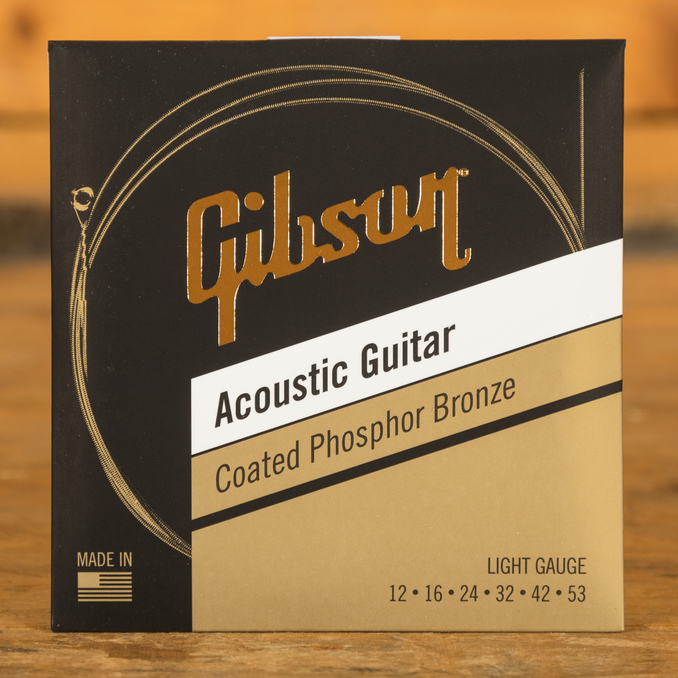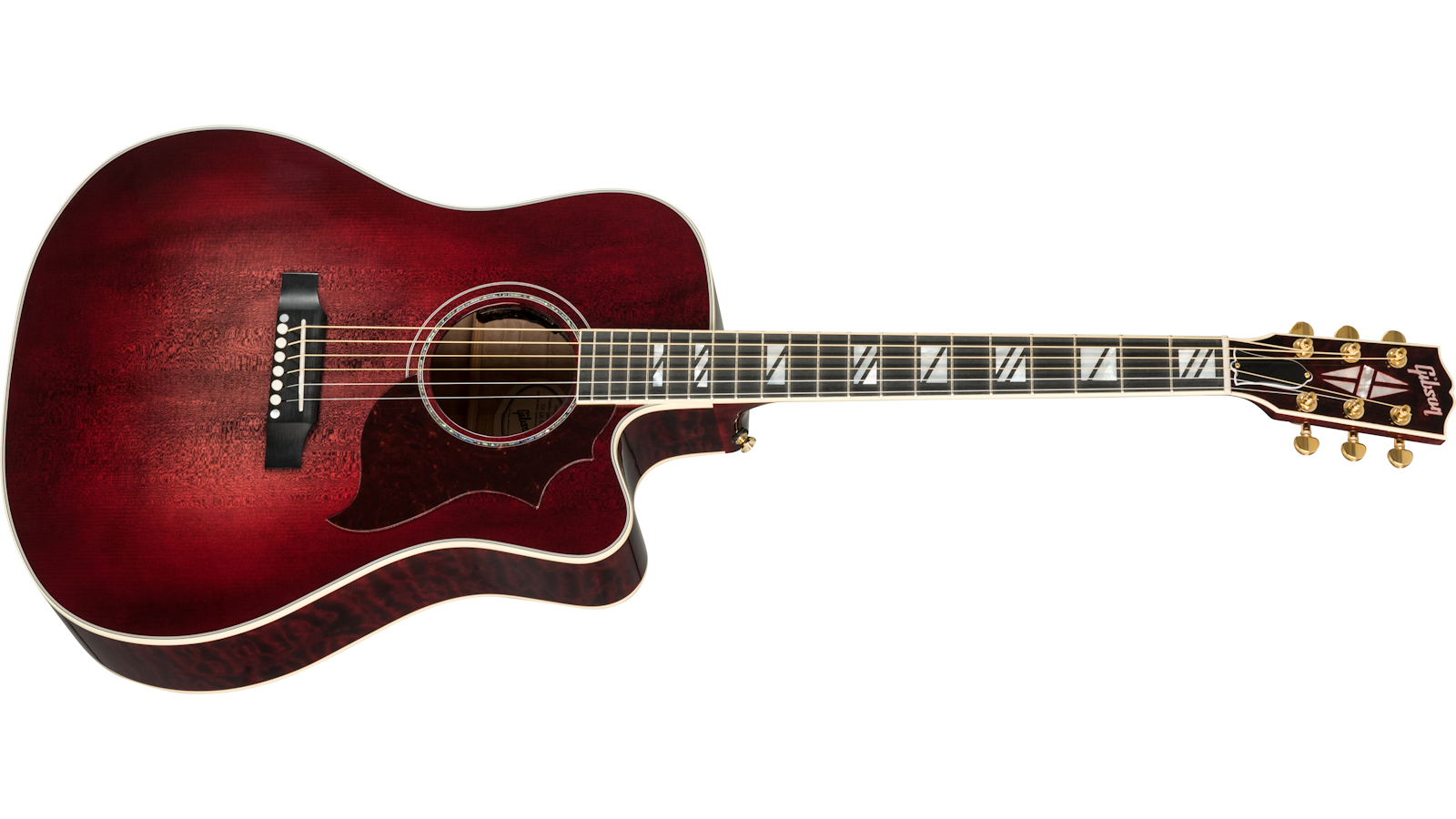-
Posts
1,152 -
Joined
-
Days Won
3
Posts posted by Leonard McCoy
-
-
Without having posted any pictures no one gets to celebrate an NGD here.
-
 1
1
-
-
We'd love to see pictures...
-
-
Real players go for Open E.
-
-
The sides of the fretboard (as was the whole guitar) were lacquered with a nitro-cellulose clearcoat finish. The nut was oversprayed with that same lacquer as well which is why the wings of the nut now turned an aged cream-color. A crack in the nut, which in itself is rather rare, is not apparent anywhere.
-
The picture is too tiny to see anything of that kind.
-
Aw, personal collection only.
-
9 hours ago, Jinder said:
How are you getting on with the Optimas? I used mediums on my J180 for a while and liked them well enough, although I went back to 12-54 Martin SPs eventually. Worth a try!
I know that you absolutely hate these strings (which is why it's so funny), but I found them to be leaps and bounds better than any kind of acoustic strings I have tried before, including the new Gibson phosphor bronze coated strings (which are in itself excellent). But then again the Optima gold strings are especially pricey, but the feel and tonality are something else entirely. I might give mediums a try after all, as I have a few Adamas medium strings lying around somewhere.
-
 1
1
-
-
I know Reverb fees (and now eBay too) are rough because they recently raised them, but I would have stuck to selling through Reverb nonetheless. That way the sale would have gone through just fine.
-
Is it crazy to want to try medium gauge strings on a smaller body guitar (J-180) as well? Has anybody done it before? What's the big difference? Feel and sound projection?
-
 1
1
-
-
This seems like a big hoax. But then again, boutique buyers never surprise me anymore. Perhaps he should rather have bought it as a wall hanger if he can't even change guitar strings.
-
-
These things sound good plugged in (for the range of sounds they make). But that is about it.
-
You don't even need to drill through the end pin hole; you can leave the cable dangling from the soundhole as well.
-
@stevegarside, I would not change anything about the guitar. If you don't gel with it for whatever reason, it is better to return it while you still can. There is no shame in that.
The J-185 and its Everly brother have a distinct sound that I would best describe as balanced, with a perfect blend of brightness and punchy mids, a singer/songwriter's kind of guitar that doesn't drown you out while singing. While many would argue that this model is the perfect strummer, I like to do all sorts of fingerstyle playing on it as well. These guitars are very comfortable to hold and to play even for big guys; they are basically a J-200 shrunk down to the perfect dimensions and to just the right sound and sound output. The model is also highly sought after by vintage collectors.
-
 1
1
-
-
18 hours ago, Dave F said:
I just ran into this in a new Gibson a couple months ago. A couple drops of 3 in 1 and the problem disappeared.
Same here and I was wondering.
-
If you hear a creaking noise during truss rod adjustment or if you think you cannot tighten any further (lest you break something), halt whatever you are doing. Proceed as follows:
- Loosen the nut of the truss rod until it is completely off,
- take some oil like Ballistol to sparingly lubricate the inner threads of the nut as well as the threads of the truss rod,
- then screw the nut back on.
Adjustment should now come buttery-smooth, and you should notice that you can adjust much further (even bringing the neck into a backbow) without any creaking noises or causing unnecessary stress to the truss rod.
Don't forget to always loosen the strings first when tightening the truss rod. It puts less stress on the truss rod and yields better results. You can also always pre-bend the neck before tightening to take some of the workload off old truss rods.
-
 1
1
-
Ever since their launch some time back I have been using Gibson's coated phoshor bronze strings on my J-180. The coating is not intrusive that you feel it and it does not wear off before I feel it is time for a string change. I used to use Elixirs and D'Addarios coated EXP16 but no more. Unfortunately Gibson's coated strings are currently sold out here.

-
Can you feel the spot protruding? If so, it might be the odd lacquer or glue spot of which an application of acetone would make quick work. It might also have been a marred spot in the fretboard, or damaged at the factory during production, and which was subsequently filled with rosewood dust and super glue as a form of cosmetic repair.
-
 1
1
-
-
The easier question to ask would probably be which artist had not played a J-45 in his career yet. Probably not very many.
-
22 hours ago, Chroma said:
Hi Leonard
You mentioned “ a cutaway is hard pass for me in general”. Just wondering why that is out of curiosity? Is it because the other full body models have a fuller sound/tone? Just curious.
I’ve heard and or seen debates regarding differences between cutaway etc... some say not so much difference in sound? I think though full body would be much larger sound.
It might prompt me to get another full body guitar down the road in a different model though.
Although this should sit fine with me for some time for sure.This is mostly personal preference of noncutaways over cutaways, so worry not that you may have made the wrong choice. For one, I do not need easier fret access past the fretboard extension, and the look, feel, and sound of noncutaways is not something I want to cut away in any shape or form. I also like my fretboard extension to be properly supported on either side by the body of the upper bout, which is something no one else would worry about.
I am looking forward to your NGD post coming up soon. Welcome to the Gibson club!

-
The Chroma series is a modern take on established models like, in this case, the Songwriter. Personally, I can see myself liking the slimmer body and fast neck but a cutaway is hard pass for me in general. I like the choice of woods as well but would probably not come to terms with the Black Cherry Burst finish. I don't mind the choice of ebony for the bridge and fretboard, or all the other appointments.

-
 2
2
-
-
There is a slim version called the Anthem SL.





Damaged by Luthier! Need Advice on Repair Options
in Gibson Repair and Restoration
Posted · Edited by Leonard McCoy
At this point it is probably best to forego the satin-finish look and polish it all up to a semi-gloss sheen. You won't get the original satin sheen back.
The problem with raising the grain by using the steam method on the back of the headstock, in order to mitigate the depression there, is that the lacquer and color located there will be affected by this method because it is not bare wood. Hence I would not recommend it, too risky.